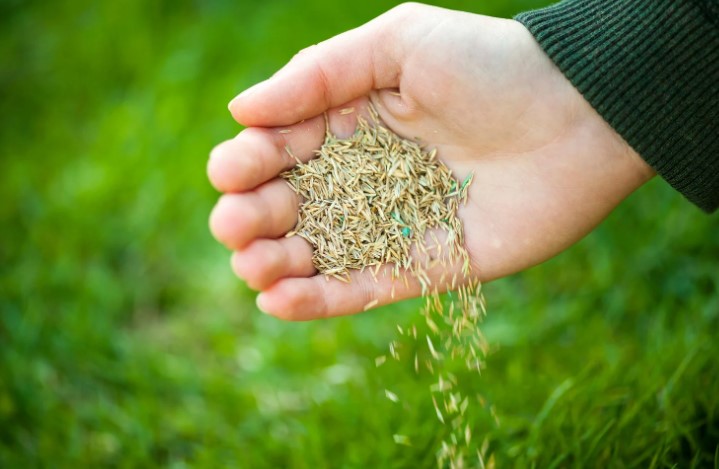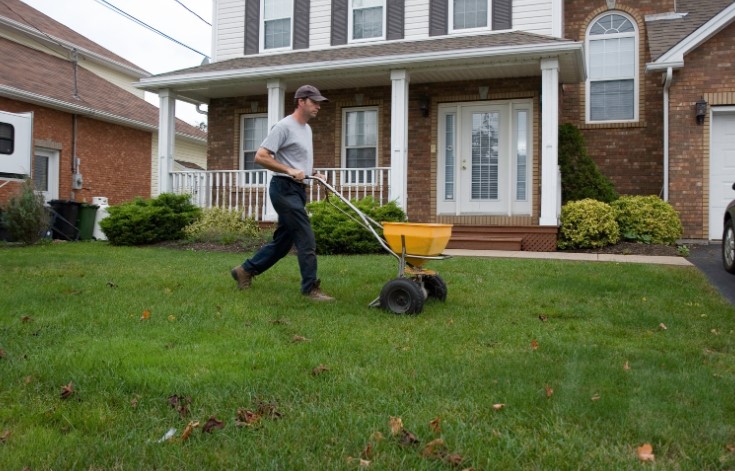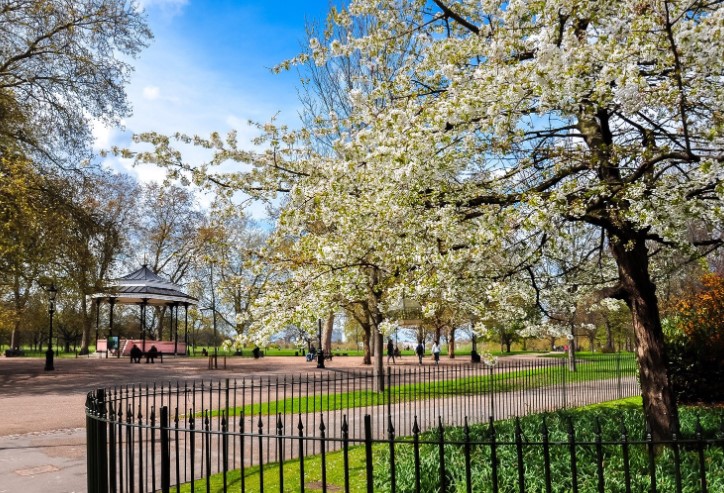- What Is Scarifying and Why Does Your Lawn Need It?
- How Long After Scarifying Should I Overseed? - How Soon Can I Do?
- When is the Best Time of Year to Scarify and Overseed in the UK?
- How to Prepare Your Lawn for Overseeding After Scarifying?
- What is the Step-by-Step Guide to Overseeding After Scarifying?
- What are Common Mistakes to Avoid When Overseeding After Scarifying?
- How Long Before I See Results from Overseeding?
- Conclusion
- What are the FAQs About How Long After Scarifying Should I Overseed?
Scarifying is a crucial part of maintaining a healthy, lush lawn. By removing thatch, moss, and dead grass, scarifying improves airflow, allowing nutrients and water to reach the soil more effectively.
However, after scarifying, your lawn can look bare and thin, which is why overseeding is essential to restore its density.
But the big question is: “How long after scarifying should I overseed?” Timing is crucial to make sure that successful grass seed germination, long-term lawn health.
In this guide, I’ll explain the best waiting period before overseeding, how to prepare your lawn, and essential aftercare tips to help your lawn recover beautifully.
What Is Scarifying and Why Does Your Lawn Need It?
What Is Lawn Scarifying?
Scarifying is the process of removing built-up thatch, getting rid of moss, and debris from your lawn using a scarifier or verticutter. It creates space for new grass to grow by improving air circulation, water absorption, and nutrient uptake.
Why Is Scarifying Important?
If your lawn feels spongy or has yellowing patches, poor drainage, or excessive moss to remove, scarifying can help by:
- Preventing thatch buildup, which blocks water and nutrients.
- Encouraging stronger, deeper grass roots.
- Enhancing lawn density and overall health.

How Long After Scarifying Should I Overseed? – How Soon Can I Do?
You shouldn’t overseed immediately after scarifying because the lawn needs some recovery time. Generally, you should wait 3 to 7 days before overseeding, depending on the weather, lawn condition, and soil moisture levels.
What are the Factors Affecting the Timing of Overseeding?
- Weather Conditions: In the UK, mild temperatures (10-18°C) with some moisture are ideal for overseeding.
- Lawn Condition: If the lawn is heavily damaged, allow a few extra days for recovery.
- Soil Moisture: Ensure the soil is slightly moist but not overly wet before spreading new seeds.
What is the Risk of Overseeding Too Soon?
If you overseed immediately, the seeds may fail to establish properly due to soil disturbance. Giving your lawn a few days to settle ensures better seed-to-soil contact and successful germination.
When is the Best Time of Year to Scarify and Overseed in the UK?
Timing plays a vital role in lawn renovation success. The best seasons for scarifying and overseeding in the UK are:
| Season | Pros | Cons |
| Autumn (September-October) | Warm soil, consistent rainfall, minimal weed competition | Shorter growing period before winter |
| Spring (March-April) | Warmer temperatures, rapid seed germination | Risk of dry spells, more weed competition |
Why Autumn Is Best for overseeding?
Autumn provides the ideal conditions for overseeding after scarifying, as the soil is warm, there’s natural moisture, and weeds are less aggressive.

How to Prepare Your Lawn for Overseeding After Scarifying?
To maximise seed germination, proper preparation is key. Here’s what I do before overseeding:
- Clear Debris – Remove any remaining thatch or moss with a rake.
- Loosen the Soil – Lightly aerate the lawn to improve seed-to-soil contact.
- Choose the Right Grass Seed – Use a UK climate-friendly mix, such as ryegrass for hard-wearing lawns or fescues for shady areas.
- Fertilise (Optional) – Apply a low-nitrogen pre-seeding fertiliser to support new seed growth.
What is the Step-by-Step Guide to Overseeding After Scarifying?
Overseeding correctly ensures healthy, even grass growth. Here’s my step-by-step process:
- Water the Lawn Lightly – Moist soil helps seeds settle in better.
- Spread the Grass Seed Evenly – Use a seed spreader or hand-sow for small areas.
- Rake the Seeds In – Lightly rake the surface to cover the seeds with a thin layer of soil.
- Firm the Soil – Gently press down the seeds using a roller or by walking over them.
- Water Regularly – Keep the soil consistently moist, especially during the first 2–3 weeks.

What are Common Mistakes to Avoid When Overseeding After Scarifying?
Even with the right process, some mistakes can reduce seed germination rates. Here are a few pitfalls to avoid:
- Overseeding Too Soon – Waiting 3-7 days allows the soil to settle for better seed growth.
- Using the Wrong Grass Seed – Choose a variety suitable for your lawn type and climate.
- Not Keeping Soil Moist – Seeds need constant moisture to sprout.
- Skipping Aftercare – Fertilisation and proper mowing help new grass thrive.
How Long Before I See Results from Overseeding?
The time it takes to see results depends on the type of grass seed and growing conditions.
| Grass Type | Germination Time |
| Ryegrass | 5-10 days |
| Fescues | 7-14 days |
| Bentgrass | 10-14 days |
What are Key Factors Affecting Growth?
- Soil Temperature – Ideal range is 10-18°C.
- Watering – Keep soil moist but not waterlogged.
- Mowing Lawn – Avoid mowing until new grass reaches 5-7 cm.
Conclusion
Scarifying helps rejuvenate your lawn, but overseeding ensures it grows back thicker and healthier. The key takeaway is to wait 3-7 days before overseeding, allowing the soil to settle for optimal seed germination.
By following the step-by-step overseeding guide, choosing the right grass seed, and avoiding common mistakes, you’ll achieve a lush, green lawn ready to thrive! 🌱
Final Tip:
Regular lawn maintenance, including aeration, watering, and seasonal fertilisation, will keep your lawn in top condition for years to come.
What are the FAQs About How Long After Scarifying Should I Overseed?
1. Can I Overseed Immediately After Scarifying?
No, it’s best to wait 3-7 days for the soil to settle.
2. Should I Fertilise Before or After Overseeding?
Use a pre-seeding fertiliser before sowing, and a low-nitrogen fertiliser after germination.
3. What If It Rains Heavily After Overseeding?
Light rain is beneficial, but heavy rain can wash away seeds. If rain is forecasted, delay overseeding.
4. How Soon Can I Mow After Overseeding?
Wait until new grass reaches 5-7 cm before mowing on a high setting.


0 Comments